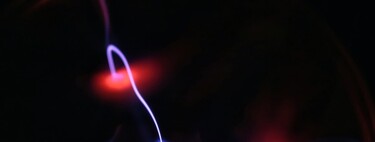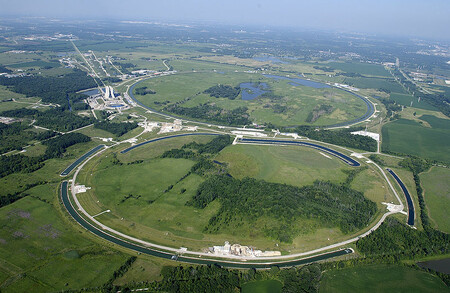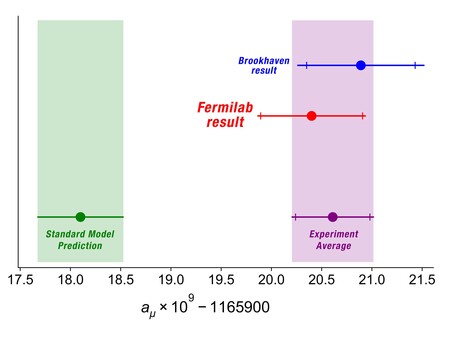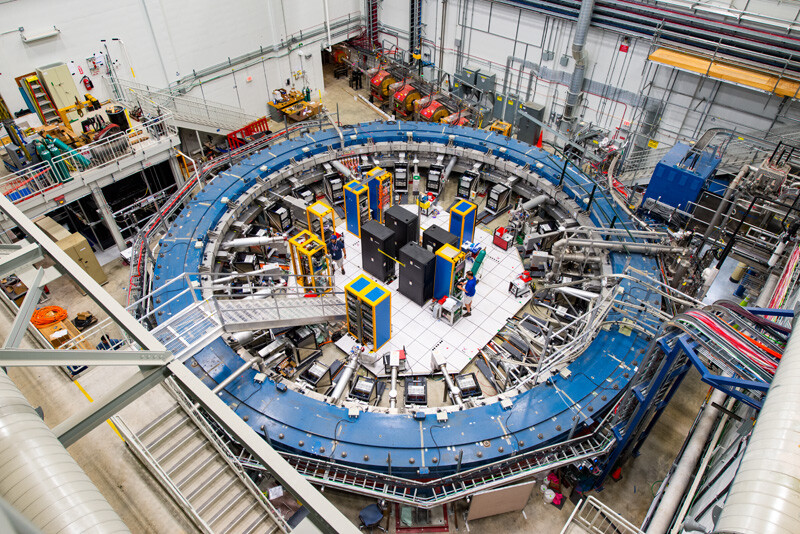We are on the verge of defying the current laws of physics. Fermilab and an international team of 200 scientists have published the first results of their Muon g-2 experiment and have found important evidence that the Standard Model of particle physics is not enough to explain what was observed. An experiment performed with unprecedented precision and anticipating the possible existence of an unknown force or particle.
“It is an extraordinary day for the entire international community,” explain those responsible for the experiment, who compare this finding with the arrival of the first rover to Mars.
The particle analyzed is the muon, similar to the electron but much heavier. Scientists have found that these muons do not act as predicted when sent through a strong magnetic field at Fermilab, the national laboratory for high-energy physics in the US and home to the second largest particle accelerator in the world after CERN.

Something seems to be wrong with the Standard Model
The result shows that the muon is affected by something that is not found in the Standard Model, the theory used for the last decades. It is not the first time that the possibility that there is a force or some particle beyond has been proposed, in fact it is widely considered among the scientific community that the theory is not complete, but it is the the first time that an experiment of this magnitude is carried out and the data is so clear that something goes wrong.

In 2011, a series of related experiments at Brookhaven National Laboratory also anticipated this possibility. Recently, in March 2021, CERN obtained an “intriguing result” with muons that pointed to a possible breakdown of the universality of the lepton flavor.
The calculation of the experiment revolves around the muon’s g-factor, which can be calculated with enormous precision. This data reflects the muon’s interactions with everything else in the universe. However, the results do not match the theory. Not at least when the four known fundamental forces are taken into account: gravitational interaction, weak nuclear, electromagnetic and strong nuclear.
“This is strong evidence that the muon is sensitive to something that is not in our best theory“explains Renee Fatemi, a physicist at the University of Kentucky and in charge of the simulations of the Muon g-2 experiment.

The results show a difference with the theory with a significance of 4.2 sigma, slightly below 5 sigma (or standard deviations) that scientists require to confirm a discovery. In statistical terms, the probability that these results are a point deviation would be approximately 1 in 40,000.

Currently at Fermilab they are analyzing the data from a second and third experiment with muons. A fourth shipment of these muons down the 15-meter supermagnetic ring is underway and a fifth process is planned. For now less than 6% of the data that will eventually be collected has been analyzedBut the results are already proving to point into unknown terrain.
What is the muon #gminus2 anomaly, and why is it exciting? I made a comic about it @PhysicsMagazine https://t.co/Q3Ps7LF8bH
— PHD Comics (@PHDcomics) April 7, 2021
The deviation of the muon g-factor, which should theoretically be equal to 2, could be explained due to the presence of unknown subatomic particles or a possible fifth fundamental force. At the moment it is unknown what can cause this deviation. A job that is expected to keep physicists busy for years to come.
More information | Fermilab
